[press release; newest material at the end]
Royal Mail Marks The 90th Birthday Of Hm The Queen With Specially Commissioned Family Portrait 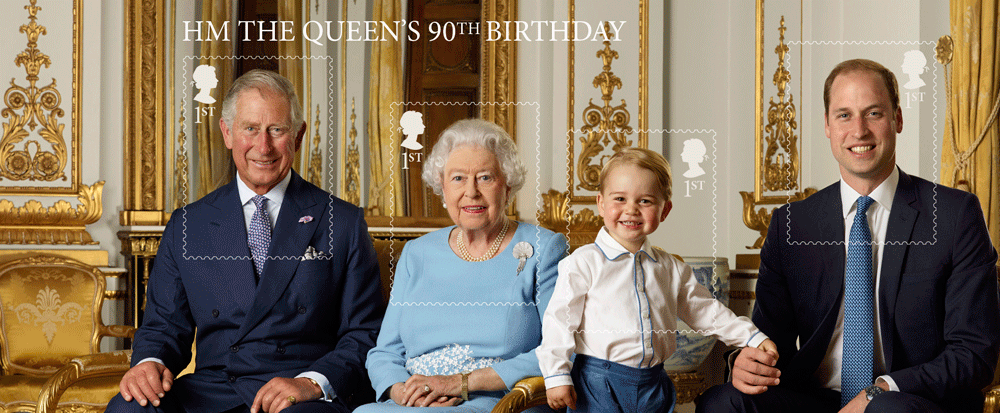
- Royal Mail celebrates the 90th birthday of HM The Queen with ten Special Stamps
- A Stamp Sheet features four generations of the House of Windsor, photographed for Royal Mail by Ranald Mackechnie
- The specially commissioned family portrait was taken in the summer of 2015 in the White Drawing Room at Buckingham Palace. It features HM The Queen, HRH The Prince of Wales, HRH The Duke of Cambridge and HRH Prince George of Cambridge. This is the first time Prince George has appeared on a Royal Mail stamp
- A further six Special Stamps are issued: three stamps focus on Her Majesty’s family life, and three honour The Queen’s official work for the country
- The set includes images of The Queen: with her father; attending the State Opening of Parliament in 2012; with Princess Anne and Prince Charles in 1952; visiting New Zealand in 1977; with The Duke of Edinburgh in 1957; and with Nelson Mandela in 1996
- Today, The Queen, accompanied by The Duke of Edinburgh, will visit the Royal Mail Windsor delivery office on William St, Windsor. This visit will mark the 500th Anniversary of the Postal Service
- Her Majesty will be presented with the first in a limited numbered edition of 90 framed sets that bring together stamps issued to mark significant achievements of HM The Queen over the years
- The Queen is the longest reigning UK monarch and also the oldest reigning monarch in the world
- The stamps are available to pre-order from today at www.royalmail.com/hmq90 and available to purchase from 8,000 Post Offices from 21 April
Royal Mail today celebrates the 90th birthday of HM The Queen with ten new stamps.
Photographed by Ranald Mackechnie in the summer of 2015 for Royal Mail, the specially commissioned Stamp Sheet features a family portrait of four generations of the House of Windsor: HM The Queen, HRH The Prince of Wales, HRH The Duke of Cambridge and for the first time on a Royal Mail stamp, HRH Prince George of Cambridge. The photograph was taken in the White Drawing Room at Buckingham Palace.
The perforations in the Stamp Sheet are positioned to create a postage stamp for each member of the Family.
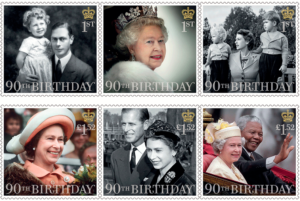 The six Special Stamps celebrate HRH The Queen’s birthday with three stamps focusing on Her Majesty’s family life, and three honouring The Queen’s official role.
The six Special Stamps celebrate HRH The Queen’s birthday with three stamps focusing on Her Majesty’s family life, and three honouring The Queen’s official role.
The family stamps include an image of The Queen with her children, the young Prince Charles and Princess Anne. A stamp with the Duke of Edinburgh marks their long partnership. This is also the first time Royal Mail has issued a stamp featuring The Queen with her father.
The three remaining stamps mark The Queen’s official duties: as Head of State for the opening of Parliament; as Head of the Commonwealth where she is depicted with Nelson Mandela; and on a state visit to New Zealand. The images represent more than 100 state visits made worldwide by Her Majesty since her accession.
Today, The Queen, accompanied by The Duke of Edinburgh, will visit the Royal Mail Windsor delivery office on William St, Windsor. This visit will mark the 500th Anniversary of the Postal Service.
Her Majesty will be presented with the first in a limited numbered edition of 90 framed sets that bring together stamps issued to mark significant achievements of HM The Queen over the years.
About the photograph: Royal Mail had to consider a number of factors in the planning of the photoshoot.
Royal Mail had to consider a number of factors in the planning of the photoshoot.
Photographer Ranald Mackechnie, was chosen due to his excellent use of light in his work and specialist portrait skills. Ranald had worked with the Royal Mail design team many times; however, this was the first time his work would feature on a stamp.
The team looked at a range of rooms within the Palace and originally selected the Yellow Drawing Room as it was the preferred choice of the photographer. However, after reviewing the initial test shots, the team felt that the White Drawing Room would best capture the sense of this special portrait, without overpowering the actual photograph.
Another challenge was the height difference within the group.8,000 Post Offices from 21 April
For both aesthetic and technical reasons Prince George couldn’t be positioned much lower within the photograph. The position of each portrait within the miniature sheet was critical due to tight technical constraints.
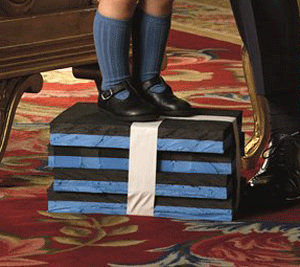 The team undertook an initial recce of locations within the Palace and then conducted two half-day test shoots using the high density foam blocks that Ranald has as part of his kit. This ensured the shot could be composed as much as possible prior to the final shoot, which took about 25 minutes.
The team undertook an initial recce of locations within the Palace and then conducted two half-day test shoots using the high density foam blocks that Ranald has as part of his kit. This ensured the shot could be composed as much as possible prior to the final shoot, which took about 25 minutes.
Using the blocks enabled the Prince to be lifted into the frame so it was a more intimate grouping.
More from Royal Mail:
Her Royal Highness Princess Elizabeth of York was born into a world where memories of her great-great-grandmother, Queen Victoria, were still fondly held, at a time when the First World War remained painfully fresh in people’s minds.
Little more than 25 years later, the Princess would become Queen. In time, she would see it all for herself, as no other monarch has visited more countries or met more of her subjects than Queen Elizabeth II. As the longest-reigning sovereign in British history marks her 90th birthday, the Kingdom that she represents is very different from the one she inherited in 1952. But whatever the changes or upheavals, there has always been one constant at the heart of national life – The Queen herself.
Most British people did not imagine that the newborn daughter of The Duke and Duchess of York would, one day, be their Queen. Born on 21 April 1926, Princess Elizabeth was joined by a sister, Princess Margaret Rose, in August 1930. The girls enjoyed a happy childhood, alternating between London, Windsor, Sandringham and Balmoral – much as Her Majesty does today. Their lives, though, would be transformed by the abdication crisis of 1936, and the subsequent coronation of King George VI. The pressures on them were soon compounded by the Second World War, during which the whole family would become a symbol of national fortitude. Come the hard-won victory, the strain of office had taken a heavy toll on George VI.
Princess Elizabeth’s marriage to Philip Mountbatten in November 1947 was a welcome cause for national celebration, as was the arrival of a son and heir, Prince Charles, a year later. But the young couple were soon required to assume more and more of The King’s duties. In February 1952, his early death handed the crown to a 25-year-old mother-of-two. Royal duties would inevitably place great demands on the young Queen but there was always time for family life, especially after the birth of two more children.
Little more than 13 years after the birth of her youngest child, Prince Edward, The Queen would become a grandmother in her Silver Jubilee year, following the birth of Princess Anne’s son, Peter Phillips. Today, The Queen and The Duke of Edinburgh are proud great-grandparents five times over.
Queen of the UK and 15 Commonwealth nations, Her Majesty is the epitome of duty and regal authority in public, while in private she is seldom happier than when surrounded by her family, preferably in the countryside.
Like her favoured surroundings, her interests and passions have changed little over the years. The monarch who loves blending in with the crowd at the Royal Windsor Horse Show every spring is as enthusiastic as the young Princess who won her first competition at the same event as a teenager. The eagle-eyed racegoer scanning the field at Ascot or Epsom is as well informed as the expert breeder who was Britain’s leading racehorse owner in 1954.
From childhood to the present day, dogs have also been an ever-present feature of The Queen’s life. Welsh corgis are a particular favourite, as well as a corgi-dachshund cross known as a ‘dorgi’. Less well known, perhaps, is her skill at working the gundogs that she breeds at Sandringham, some of which have gone on to be champions. Her love of animals is also reflected in her taste in art, for as well as being custodian of the treasures in the Royal Collection, The Queen is an enthusiastic collector of paintings of birds.
When it comes to holidays, Her Majesty is seldom happier than when in the Scottish Highlands. Since childhood, she has spent part of the summer at Balmoral, but it is much more than a place for relaxation. With a Scottish mother and being twice descended from Robert the Bruce himself, Her Majesty feels as much at home here as anywhere else on Earth.
Wherever she is in the world, The Queen is always on duty. Her Majesty never stops being the Head of State, Fount of Justice, Defender of the Faith, Head of the Armed Forces, Head of the Commonwealth, Head of Nation and much else. As she herself acknowledged in a speech broadcast to the Commonwealth on the day she turned 21: “My whole life, whether it be long or short, shall be devoted to your service”. These words concluded an historic speech which, at the time, was said to have reduced former Prime Minister Winston Churchill to tears.
To this day, the words are still widely quoted – for they remain as true on the occasion of The Queen’s 90th birthday as they were on her 21st. Indeed, Poet Laureate Carol Ann Duffy included them in ‘The Crown’, a poem specially commissioned for the service at Westminster Abbey on 4 June 2013 to mark the 60th anniversary of The Queen’s Coronation.
•Her Majesty visited a post office delivery station on Wednesday, the day before the stamps were issued. The
Daily Mail has the story.
 show or by mail.
show or by mail.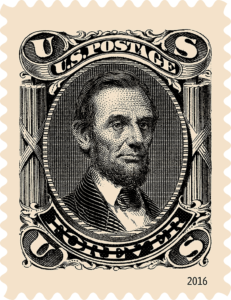 June 1 – Classics Forever, souvenir sheet of 6 stamps, 6 designs. Only available at the show or by mail.
June 1 – Classics Forever, souvenir sheet of 6 stamps, 6 designs. Only available at the show or by mail.
 PRODUCT RANGE AT A GLANCE
PRODUCT RANGE AT A GLANCE Miniature Sheet: £6.04
Miniature Sheet: £6.04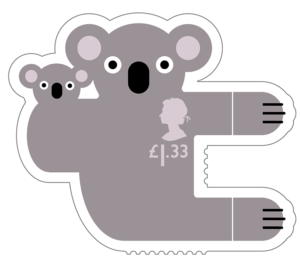 Andrew Ross who designed the stamps was challenged to devise interactive stamps that particularly appealed to children and encouraged them to brighten up their letters and cards. He wanted to ‘push the envelope’ whilst working within the constraints of the technical requirements around postage stamps including the need for them to be easily read by Royal Mail’s sorting machines. He came up with the idea of engaging, friendly and fun animal characters that could ‘cling’ to the top or side of envelopes. He wanted to create a variety of shapes and colours to generate interest but was mindful that each character had to sit comfortably alongside each other and have a degree of consistency so that they clearly
Andrew Ross who designed the stamps was challenged to devise interactive stamps that particularly appealed to children and encouraged them to brighten up their letters and cards. He wanted to ‘push the envelope’ whilst working within the constraints of the technical requirements around postage stamps including the need for them to be easily read by Royal Mail’s sorting machines. He came up with the idea of engaging, friendly and fun animal characters that could ‘cling’ to the top or side of envelopes. He wanted to create a variety of shapes and colours to generate interest but was mindful that each character had to sit comfortably alongside each other and have a degree of consistency so that they clearly  looked like they were part of a set.
looked like they were part of a set.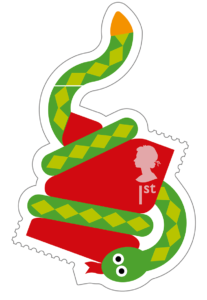 Number of stamps: Six
Number of stamps: Six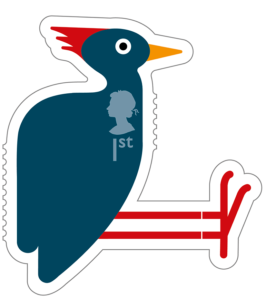
 First Day Covers:
First Day Covers: 

 (New York, NY) — Renowned collector and Wall Street money manager William H. Gross will sell his acclaimed Hawaii stamp and cover collection during World Stamp Show – New York 2016 with his proceeds from the auction to be donated to nonprofit organizations, including The Smithsonian’s National Postal Museum. The collection features many of the most iconic rarities of Hawaiian philately, including ten Hawaiian Missionary stamps.
(New York, NY) — Renowned collector and Wall Street money manager William H. Gross will sell his acclaimed Hawaii stamp and cover collection during World Stamp Show – New York 2016 with his proceeds from the auction to be donated to nonprofit organizations, including The Smithsonian’s National Postal Museum. The collection features many of the most iconic rarities of Hawaiian philately, including ten Hawaiian Missionary stamps.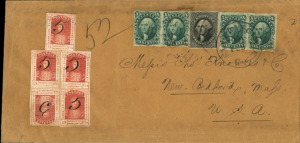 Lot #24 [shown on the left] — This is the only recorded cover with more than one of the rare 1857 “5” cents on 13-cent provisional surcharge (in this case, five examples), used in combination with United States postage. It is widely regarded as the most outstanding United States and Hawaiian mixed-franking cover outside of the Missionary issue. Pre-sale estimate: $250,000 – 350,000
Lot #24 [shown on the left] — This is the only recorded cover with more than one of the rare 1857 “5” cents on 13-cent provisional surcharge (in this case, five examples), used in combination with United States postage. It is widely regarded as the most outstanding United States and Hawaiian mixed-franking cover outside of the Missionary issue. Pre-sale estimate: $250,000 – 350,000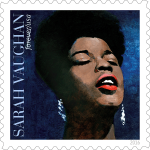 Just one:
Just one: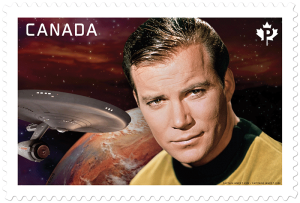 Each country is handling this differently: The USPS told us in advance there would be 16 stamps, and one would be “unveiled” each weekday starting April 4th. Canada Post has not told us how many “Star Trek” stamps there will be, and the “unveilings” are at no set interval. The USPS Parks are announced in a press release; Canada Post seems to be creating “photo ops” for each announcement.
Each country is handling this differently: The USPS told us in advance there would be 16 stamps, and one would be “unveiled” each weekday starting April 4th. Canada Post has not told us how many “Star Trek” stamps there will be, and the “unveilings” are at no set interval. The USPS Parks are announced in a press release; Canada Post seems to be creating “photo ops” for each announcement.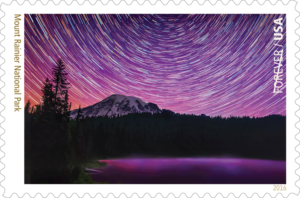 My first reaction (kept mostly to myself) was, “Aw, c’mon, just give us the *(&^@! information.” But as we’ve gone along with the announcements, and posted them one-by-one on
My first reaction (kept mostly to myself) was, “Aw, c’mon, just give us the *(&^@! information.” But as we’ve gone along with the announcements, and posted them one-by-one on 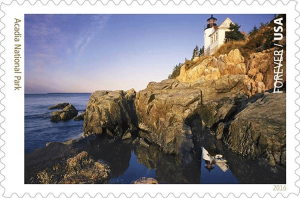 Show-New York 2016, at which the stamps are being issued. I was wrong on both, although I was fairly sure Yellowstone would be the 16th subject announced, and it was.
Show-New York 2016, at which the stamps are being issued. I was wrong on both, although I was fairly sure Yellowstone would be the 16th subject announced, and it was. When I saw that one of the Canadian stamps would show “Star Trek” star William Shatner, a Canadian, I was also fairly sure another Canadian in the cast, James “Scotty” Doohan would be honored, and I was right. The Spock (Leonard Nimoy) stamp made me suspect a DeForrest Kelley stamp was coming; it is.
When I saw that one of the Canadian stamps would show “Star Trek” star William Shatner, a Canadian, I was also fairly sure another Canadian in the cast, James “Scotty” Doohan would be honored, and I was right. The Spock (Leonard Nimoy) stamp made me suspect a DeForrest Kelley stamp was coming; it is. One year to the day after she was appointing Acting Director of Stamp Services for the U.S. Postal Service, Mary-Anne Penner has been promoted to Director, Stamp Services.
One year to the day after she was appointing Acting Director of Stamp Services for the U.S. Postal Service, Mary-Anne Penner has been promoted to Director, Stamp Services.
 The six Special Stamps celebrate HRH The Queen’s birthday with three stamps focusing on Her Majesty’s family life, and three honouring The Queen’s official role.
The six Special Stamps celebrate HRH The Queen’s birthday with three stamps focusing on Her Majesty’s family life, and three honouring The Queen’s official role.
 The team undertook an initial recce of locations within the Palace and then conducted two half-day test shoots using the high density foam blocks that Ranald has as part of his kit. This ensured the shot could be composed as much as possible prior to the final shoot, which took about 25 minutes.
The team undertook an initial recce of locations within the Palace and then conducted two half-day test shoots using the high density foam blocks that Ranald has as part of his kit. This ensured the shot could be composed as much as possible prior to the final shoot, which took about 25 minutes. On Saturday night, May 28, the opening weekend of NY2016, The Philatelic Foundation will award its Neinken Medal to Dr. Peter McCann for meritorious service to philately. The award will be made at a joint dinner reception with The Collectors Club which will present its Lichtenstein Award to Dr. Cheryl Ganz.
On Saturday night, May 28, the opening weekend of NY2016, The Philatelic Foundation will award its Neinken Medal to Dr. Peter McCann for meritorious service to philately. The award will be made at a joint dinner reception with The Collectors Club which will present its Lichtenstein Award to Dr. Cheryl Ganz.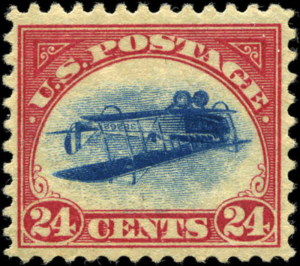 (New York, NY) On Monday, April 4, 2016, a representative of Spink USA, a leading rare stamp auctioneer, brought a Jenny Invert to The Philatelic Foundation’s New York offices for authentication on behalf of a potential consignor. The PF is widely regarded in the hobby of stamp collecting for its expertise in authenticating this iconic United States airmail rarity. Over the last 70 years, the PF has issued Certificates of Authenticity for 84 of the 100 stamps from the original error sheet of the “upside down airplane stamp,” including all six of the existing blocks of four.
(New York, NY) On Monday, April 4, 2016, a representative of Spink USA, a leading rare stamp auctioneer, brought a Jenny Invert to The Philatelic Foundation’s New York offices for authentication on behalf of a potential consignor. The PF is widely regarded in the hobby of stamp collecting for its expertise in authenticating this iconic United States airmail rarity. Over the last 70 years, the PF has issued Certificates of Authenticity for 84 of the 100 stamps from the original error sheet of the “upside down airplane stamp,” including all six of the existing blocks of four.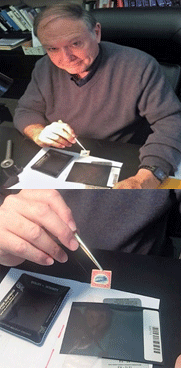 ve Director Larry Lyons and Curator Lewis Kaufman (shown at right). Matched against the PF’s detailed records, photos and electronic scans of the Jenny Inverts, the evidence quickly pointed to the possibility that the stamp was one of the two missing from a famous block of four Jenny Inverts. The block, which was previously owned by Ethel McCoy, was stolen from its exhibition frame in 1955 during an American Philatelic Society convention in Norfolk, Virginia.
ve Director Larry Lyons and Curator Lewis Kaufman (shown at right). Matched against the PF’s detailed records, photos and electronic scans of the Jenny Inverts, the evidence quickly pointed to the possibility that the stamp was one of the two missing from a famous block of four Jenny Inverts. The block, which was previously owned by Ethel McCoy, was stolen from its exhibition frame in 1955 during an American Philatelic Society convention in Norfolk, Virginia.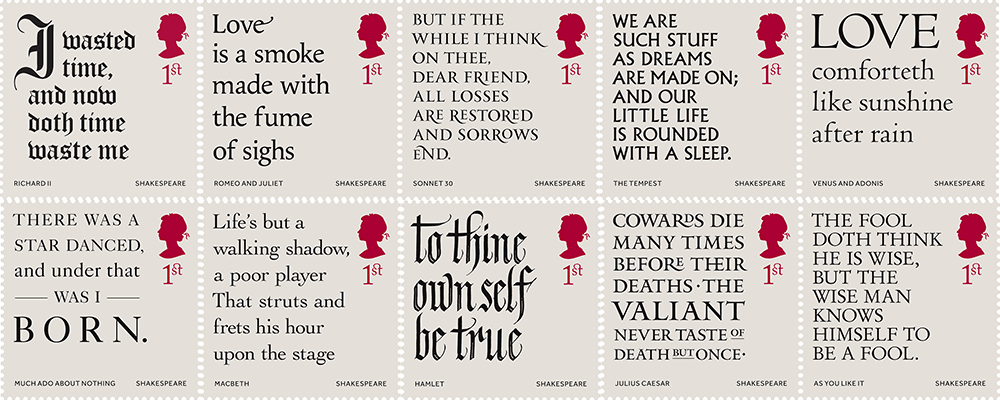
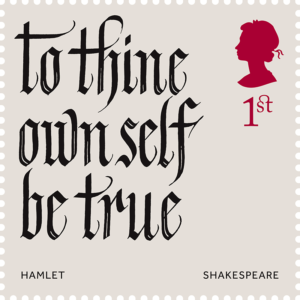 10 x First Class Stamps £6.40
10 x First Class Stamps £6.40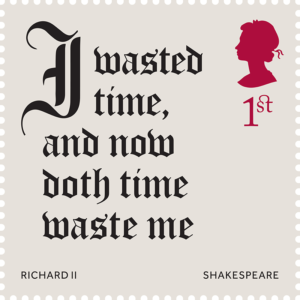 immortal words and poetry. Having previously issued stamps that depict performances of his plays, a painting of the bard himself and the world famous Globe Theatre, for this set Royal Mail has opted to focus on selected quotes from plays and sonnets that have made him so famous and ensured an enduring popularity.
immortal words and poetry. Having previously issued stamps that depict performances of his plays, a painting of the bard himself and the world famous Globe Theatre, for this set Royal Mail has opted to focus on selected quotes from plays and sonnets that have made him so famous and ensured an enduring popularity.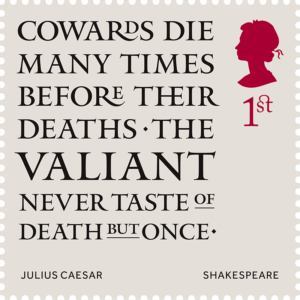 Stamps In Detail:
Stamps In Detail: 

